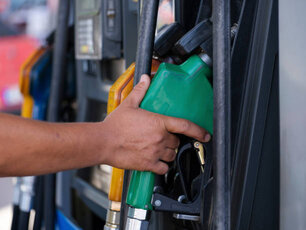With this really short review, I plan on uncovering my personal top 8 reasons for why every professional Rideshare driver should have and maintain a full tank of gas! How many passengers ever ordered an Uber ride that was more than 20 miles in travel distance and your driver had to stop for gas? How many drivers ever accepted a ride that was more than 20 miles in travel distance and ran out of gas before the trip could be completed? It could have been because the driver wasn’t paying attention to their gas meter or simply because the driver guesstimated the amount of miles for the trip to the amount of leftover gas wrong.
Here at #1RideShareDoc, I’m all about sharing my personal experiences with you guys concerning this gigantic Rideshare industry! Especially when referring to drivers maintaining a full tank of gas. Some Uber and Lyft drivers may not have even considered the importance of having a full tank of gas until reading this review. But that’s what your Doc is here for! I’m here to discuss the things that people rarely talk about, especially these Rideshare companies. You know popular companies like Uber, Lyft, Via, Alto and Sidecar just to name a few! Please allow me to prepare you for what’s ahead of you and more importantly behind you..
This review will be divided into the following sections, for better absorption and clearer understanding purposes:
Introduction
What’s A Full Tank Of Gas?
Gas Tank Sizes And What A Rideshare Driver Should Know First!
Why Is It Important For A Rideshare Driver To Know The Different Tank Sizes Of A Vehicle Prior To Pumping Gas?
My Personal Top 8 Reasons For Why Drivers Should Have And Maintain A Full Tank Of Gas!
When Would It Be A Good Idea For A Driver To Put More Gas In Their Tank?
What’s A Good Way For A Driver To Remember To Fill Up On Gas!
My Professional Conclusion
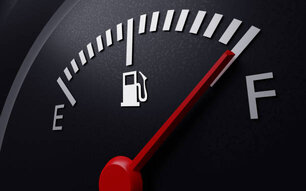
What’s A Full Tank Of Gas?
Silly question right guys? Asking this question is like asking what a full bottle of soda is or a full case of beer lol, I know.. I’m pretty sure all of you guys know what it means when referring to having a full tank of gas. But just so we’re clear and everyone’s on the same page, I want to make sure that everyone knows and understands that a full tank of gas is when the fuel gauge is either at or slightly past the full line after a driver finishes pumping gas at the pump.
But due to the differences in tank sizes amongst various vehicle make and models, what constitutes as a full tank for one car may not align with the same measurements for another, highlighting the need for an individualized understanding based on the specific characteristics of each vehicle. I’ll talk more about that next so we’ll all be on the same page with that as well!
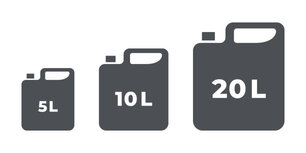
Let me first start by saying that all cars are not created equal! Especially when referring to not only the size of a vehicle’s gas tank, but the certain type of gas (Regular, Mid-grade and Premium) that the driver is supposed to be pumping into the vehicle as well. That being said, the specific make and model of a driver’s vehicle is what the size or capacity of the vehicle’s gas tank will 100% depend on. Smaller vehicles have smaller tank capacities while larger vehicles of course have larger tank capacities. This in my opinion would be a good place to start when a Rideshare driver is trying to remember vehicles and their fuel tank sizes!
But to make this even easier for an Uber driver to remember, every driver should know and understand the three different types of vehicles (or maybe I should say vehicle gas tank sizes or capacities) prior to their first time filling up at the gas station. I’ll start by providing you with a little bit of details concerning “compact vehicle” gas tanks and end with a small description on the gas tank sizes or capacities of SUV’s and trucks. When you understand the make and model of the vehicle your driving in, you’ll also understand what your vehicle’s fuel tank size might be!
Compact Vehicle Fuel Tanks: Compact vehicles such as the Volkswagen Golf, Honda Civic, Ford Focus, Toyota Corolla and Chevrolet Cruze (just to name a few examples!) all have compact fuel tank sizes ranging from 10 to 15 gallons in capacity. These particular vehicles have the ability of accommodating 4 to 5 passengers and are known for their smaller size and fuel efficiency. When a Rideshare driver knows this information prior to filling up their gas tank for the first time, other things tend to become a lot easier which I’ll be diving more into shortly!
SUV’s and Truck Fuel Tanks: SUV vehicles such as the Subaru Crosstrek, Honda CR-V, Toyota RAV4, Ford explorer, Chevrolet Tahoe and the Grand Cherokee (just to name a few examples!) all have increased gas tank sizes that have the capability of holding up to 30 gallons of fuel in capacity. And this is all from filling up at the gas pump once guys! Not only that, but these vehicles are also designed for other purposes too including off-road capabilities and towing. The same goes for your common truck models which includes the Ram 1500, Ford F-150, GMC Sierra, Toyota tundra and the Chevrolet Silverado!
Again, when a Rideshare driver knows and applies these very simple suggestions prior to filling up at the pump for the first time, other things that involve a driver’s work day or overall game plan tend to become a lot easier.
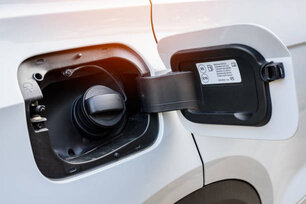
I’ll get straight to the point! It’s important for all Rideshare drivers to know and understand different tank sizes that motor vehicles come in (particularly their own vehicle!) prior to pumping gas for two reasons. Having and knowing this knowledge is important not only for the purpose of a driver being able to accurately estimate their fuel cost for the day or week, but also for the purpose of a driver being able to undoubtedly accept and complete any ride that pops up on their Rideshare app. When a driver knows and understands what was just said, they’re instantly putting themselves in a great position to increase their earnings while simultaneously lowering their expenses!
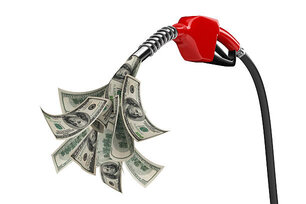
My Personal Top 8 Reasons For Why Drivers Should Have And Maintain A Full Tank Of Gas!
Now that we’ve covered what a full tank of gas is, gas tank sizes, examples and why it’s important for every Uber and Lyft driver to know this information, I would now like to list my personal top 8 reasons for why every professional Rideshare driver should have and maintain a full tank of gas:
1.) Earn Even More Profits: Drivers who maintain a full tank of gas are also ensuring not to have as many mid-trip interruptions as far as refueling goes. This in turn will ensure that the driver is continuously available and capable of completing even more rides.
2.) Less Stressing or Worrying: Drivers who begin their day or have a habit of maintaining a full tank of gas are also choosing to enjoy an enhanced piece of mind while driving on the road. That’s because having a full tank of gas naturally eliminates any and all worries concerning the drivers vehicle running out of gas while a trip is being completed. Now the driver can worry about other important matters.
3.) Improved Time Management: Drivers who begin their day or have a habit of maintaining a full tank of gas starting from the beginning of the day are also choosing to minimize their downtime. Needless to say, but that’s because they don’t need to stop to pump any gas. That downtime can now be used for something more important like checking on the maintenance of your car for example!
4.) Create More Satisfied Riders: Drivers who drive with a full tank of gas are also aiming at having more happy or satisfied passengers. Maintaining a full tank of gas reassures that passengers have a dependable ride all the way to their drop off destination without any fuel-related delays.
5.) Plan A Better Route: Drivers who drive with a full tank of gas are also choosing to have the option to drive whatever route they or their rider chooses to drive without having to factor in miles/distance, refueling stops or gas stations.
6.) Ready For Emergencies: Drivers who drive with a full tank of gas are also choosing to prepare themselves for unexpected emergencies that involve not just themselves, but the passengers as well. Especially when a passenger chooses to extend their ride past the original drop off destination, which believe it or not happens more then you might think! You’re supposed to expect the unexpected right?
7.) Accepting All Rides: Drivers who drive with a full tank of gas are also choosing to have the option of accepting and completing any and all rides. It wouldn’t matter how short or long the trip may be. This in return would create more earnings for the Rideshare driver and even less worrying for the rider!
8.) Increased Ratings: Drivers who have a habit of beginning their work day with a full tank of gas are also choosing to increase the likelihood of them receiving a positive five star rating and/or review from they’re passengers. Some passengers actually appreciate Uber drivers who come prepared and ready to drive! Are you prepared?
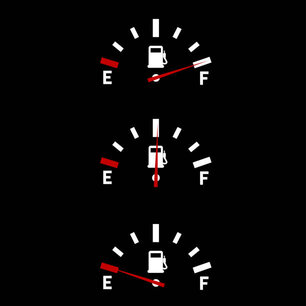
When Would It Be A Good Idea For A Driver To Put More Gas In Their Tank?
Now it’s time to provide you guys with a few suggestions for specific instances when you might have the opportunity to refuel your Rideshare vehicle. Please allow your Rideshare doc to assist you in staying on top of your gas tank. Especially if your gas tank is somewhere around halfway full or less. Providing you with these ideas should help you stay on top of your gas tank. Especially if you’re a driver who’s new to this whole Uber and Lyft thing! That being said, moments where it would be advisable for a driver to put more gas in their tank might include:
1.) Before the driver goes online
2.) When the driver isn’t completing a ride
3.) When the driver goes on break
4.) If the driver gets permission from the rider
5.) Before the driver goes offline
You’ll notice that all four of these suggestions have one thing in common (except #4). That one thing in common is that there’s no passenger in the driver’s car when the driver is making the decision to visit a gas station. So in other words, whenever there isn’t a passenger in the driver’s car, that would be the ultimate time for a driver to fill up on gas or top their gas tank off! Well, unless the rider doesn’t mind of course. If you can’t remember to do what I’ve just stated when you’re not completing a trip, then you might need to do what I’m going to suggest to you next within the following section..

What’s A Good Way For A Driver To Remember To Fill Up On Gas!
I actually have a secret way of going about remembering to check my gas levels that I haven’t shared with any driver until now. It’s the easiest way of going about remembering something, especially when introducing something new to your daily habits. With that being said, I’ve found that setting hourly alarms works best for me when I’m trying to remember when to fill up on gas. Either that or when I’m trying to remember to check my gas meter. I attach a note to each alarm so when it goes off I know why. Implement this into your daily habits and see if it works for you as well!

My Professional Conclusion
To conclude this really short review, I would like to say that it’s never a good idea for any professional Rideshare driver to not pay attention to their gas meter when driving passengers from one destination to another. A driver doing so would be the same as a janitor being told to shine an entire stadium or auditorium floor with only one 4 oz bottle of floor wax. Get the picture lol? That floor wax isn’t going to stretch hundreds of feet across an entire floor, which is the same as an Uber driver’s quarter tank of gas not having the ability to take a trip that stretches longer than 30 miles in distance. That being said, no driver should be leaving their rides up to chance or osmosis!
As a matter of fact, make filling up your gas tank a part of your daily game plan. Make sure your gas meter is always sitting on “full” before you leave the gas station. Failing to do so will not only leave you stranded as an Uber or Lyft driver, but could also leave your passenger stranded as well. Doing this could actually get a driver temporarily or permanently deactivated. Rideshare companies hold drivers 100% responsible for purchasing and maintaining their own gas levels. But to prevent this from happening, follow some of my suggestions clearly laid out within this review and remember, preparation is everything!
Now that we’re nearing the end of another great review, would you guys happen to have anything to say or add when it comes to my personal top 8 reasons for why every professional Rideshare driver should have and maintain a full tank of gas? Do you agree or disagree with one or more of my reasons concerning why a rideshare driver should have and maintain a full tank of gas? Well whether you do or don’t have anything to say or add, I would love to hear what’s on your beautiful minds? If you have something to say that you would like to be heard, please feel free to leave those kind words at the bottom of this review and I will be sure to respond back to you promptly.
If you liked what you’ve read, please feel free to Subscribe to my future post! Just be sure to enter a valid email address. Every time I make a post, you’ll receive an instant notification. Check your spam folder if you didn’t receive a confirmation email. If you’re looking for a flexible lifestyle and not keen on chauffeuring strangers around in your car, consider starting a home-based business instead! If you’re interested in the idea, don’t hesitate to read my review on Wealthy Affiliate. Thank you so much for reading and I’ll see you on my next review!


